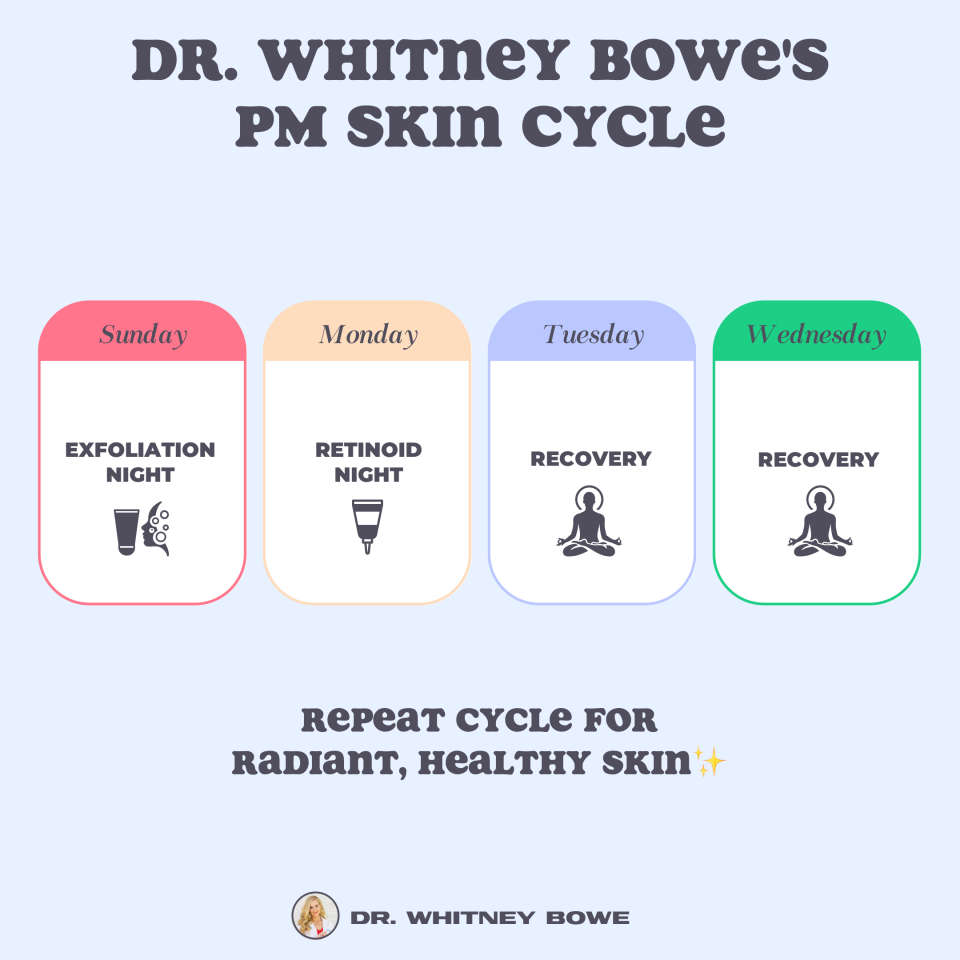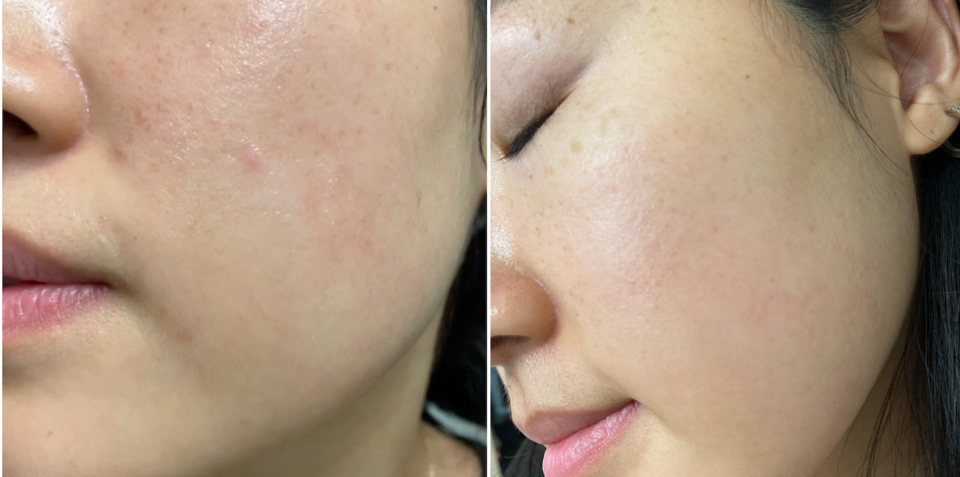Does 'skin cycling' actually work? I tried it for one month.
Naively, I assumed that after puberty, my hormonal breakouts would disappear and my dull skin would finally be flawless and glowy. Yet here I am as an adult, still battling monthly cystic zits, hyperpigmentation and as of recently, eczema.
For those reasons, I desperately embarked on the hunt for a remedy. Along with topical prescriptions, I tried slugging and dermaplaning, 10-step regimens and even nothing but water — all of which have yielded unimpressive results.
But last month I, like thousand of others on TikTok, discovered "skin cycling," yet another beauty craze with over 80 million views on the video-sharing platform. Coined by Dr. Whitney Bowe, this simple and affordable trend involves rotating, or "cycling" through your products — rather than using them all at once. The goal, Bowe says, is to divide potent, active ingredients over a four-day cycle to avoid irritating your skin for healthy, hydrated results.
'Slugging': The viral moisturizing hack. Does it work?
Understanding our skin, acne
"We used to think about skincare in a linear way," says Bowe, a New York-based dermatologist, research scientist and founder of Dr. Whitney Bowe Beauty. What started as advice for her patients soon spiraled into TikTok's latest fad when she introduced it to social media in April 2021.
"When people learned about new ingredients or products, they would just add another step in their routine and cocktail different ingredients that didn't play well together, which results in irritation rather than results."
Bowe, along with many TikTok users and other dermatologists, hail skin cycling as a "game changer." It's a bold claim — one that convinced me to give it a shot. For five weeks, I skin cycled to see if it lived up to its hype.
'Dermaplaning': Here's why women are shaving their faces
Is SKKN by Kim Kardashian worth it?: Here's what dermatologists say
What should your skin cycling routine look like?
In her private practice, Bowe says her patients benefited most from a four-step cycle. On the first night, she recommends gently exfoliating to peel off the dead skin cells. On night two, apply retinoids, a Vitamin A derivative known for its anti-aging effects. Nights three and four are dedicated to recovery, hydration and moisture. Then, the cycle repeats itself.
What's so great about skin cycling is that it's modifiable depending on your needs. Those with sensitive skin can add an extra recovery night for a five step routine, while people with oily, acne-prone skin would benefit from one less recovery night, Bowe recommends.

Salmon sperm in your skin care?: The latest K-beauty trend, explained
Throughout my month-long journey, I stuck with Bowe's recommended four night regimen. (Note, the products I used are just the ones I had at home already. Any similar products will do the trick.)
Day 1: Exfoliation Night
Bowe advises using a chemical, not physical, exfoliant, to slough away dull skin without causing micro-tears. I used COSRX AHA 7 Whitehead Power Liquid, which is recommended for those with more sensitive skin types.
After exfoliating, it's best to use a non-occlusive moisturizer, free of fragrance. For my eczema and acne-prone skin, I opted for my lightweight, innisfree Youth-enriched Cream with Orchid during every skin cycling night.
Day 2: Retinol/Retinoid Night
Retinoids are powerful actives unclog your pores, fade acne scars and brighten skin. Some people use Tretinoin, a prescription-strength retinoid, while others like myself have seen similar benefits with over-the-counter Differin 0.1% Adapalene Gel (found at CVS).
Like night one, I apply my moisturizer afterwards.
Day 3 and 4 Recovery Night
Recovery nights focus less on actives and more on simple moisture and hydration to repair your skin barrier. As recommended by Bowe, I use a hyaluronic acid serum on damp skin (CLEARSTEM CELLRENEW Serum with Stem Cells & Hyaluronic Acid)
To finish it off, I keep it consistent with my moisturizer and occasionally "slug" with Aquaphor to lock that moisture in overnight.
Skin is in: Celebrity skincare brands from Ciara, Hailey Bieber, Gabrielle Union, more
Does skin cycling' really work?
As a skincare fanatic who tried every trend and product in the book, I knew skin cycling wouldn't be the cure-all to my plethora of concerns. That's why I was surprised to see glowing results after a few cycles.
Of course, it isn't a miracle. I initially broke out — a common reaction to those who are new to chemical exfoliants — and still do, albeit less frequently. Overall, my skin seems brighter, healthier and more hydrated.

Does dairy cause acne?: Debunking all the lies we've been told about our skin
This shouldn't be too much of a surprise: Research has supported the importance of chemical exfoliation and retinoids to remove skin damage. But a common problem with these products is the risk of over-drying and irritating your skin. That's why skin cycling, according to Bowe, is so effective.
"By deliberately cycling through, people are able to use what we as dermatologists know are the most powerful, effective ingredients — but in a thoughtful, streamlined way. You get the most out of these ingredients, but you don't get the irritation or damage. "
Banana peels for your skin?: Experts weigh in on viral TikTok skincare regimen.
Who should avoid skin cycling?
Skin cycling is relatively safe with no known risks. However, not every skin type will reap its benefits. People with more severe conditions that require professional attention, such as painful, cystic acne, likely won't see results with skin cycling, which relies less on prescriptions and more on over-the-counter products.
Bowe adds, "This isn't going to replace an appointment with your dermatologist."
Reviewed: Banish pimples with these acne-busting products
Cardi B was desperate for acne help: Why her honest post is 'empowering'
This article originally appeared on USA TODAY: 'Skin cycling': TikTok's secret to healthy skin. How does it work?
